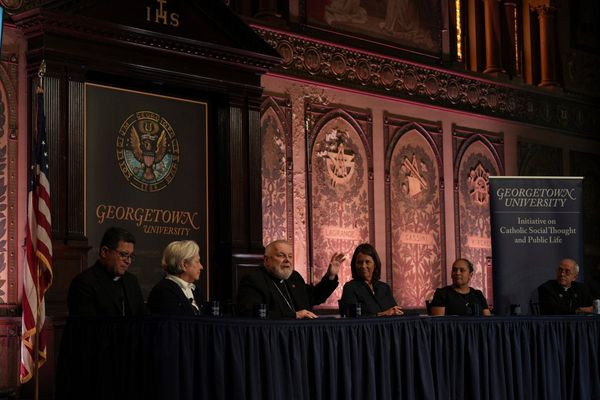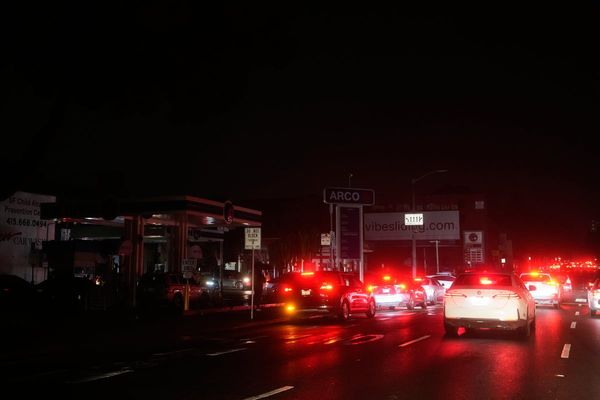
Early in December, my nephew Tom received a message on a genealogy website asking if he was related to Esna Boyd. Esna was the winner of the 1927 Australian Open, and Tennis Australia was looking for descendants because they are about to induct her into the Australian tennis hall of fame.
Esna was also my grandmother, Tom’s great-grandmother. In Scotland, where we live, my family WhatsApp group lit up.
It’s been an odd experience. Esna died in 1966 so has always been an ethereal presence – a long-skirted woman with Princess Leia buns in an ageing photograph who my mother would chide me with when asking why I was so terrible at sport.
So, at first the family messages were a little desultory. “She came second a lot.” That sort of thing.
We couldn’t ask mum, because she died in 1989 (as a family we can be a little short-lived and slow to procreate, like pandas). But soon cupboards were being searched, sepia photographs unearthed, tarnished cups polished, delicate letters unfolded.
It turns out Esna played in the first seven Australian women’s singles finals, winning only one (ouch!). But she retired with eight Australian titles – the singles, four doubles and three mixed. She also toured for Australia, playing Wimbledon, Paris and San Francisco.
New information began to arrive thanks to Michael Sexton, Tennis Australia’s brilliant historian. I’d known nothing of my great-grandfather, a farm labourer from Ayrshire in the west of Scotland who had emigrated to Melbourne, become a gold prospector, then a businessman, politician and president of the Melbourne Chamber of Commerce.
My sister Katie had a champions’ cup dated 1917, inscribed Lex Dei Vitae Lampas, the prim motto of the Presbyterian Ladies College. Sexton sent a snap of the winners’ board in Adelaide, with Esna’s name written four times. My brother Hamish found a picture of her and her father in a massive Bentley.
Sexton offered context. “In 1922 – when Esna played in the final – it was the first time women had played for a national title. As a sport, tennis offered the closest thing to gender egalitarianism that Australia had. Women’s social tennis was very popular and so having players like Margaret Molesworth, Joan Hartigan, Daphne Akhurst and Esna Boyd lifted the standard and provided aspiration.”
That stopped the snippy comments. We started reading. A newspaper clipping turned up in which Esna described a 1925 world tour, including a match against Suzanne Lenglen, the French legend widely regarded as the greatest female player of the amateur era.
“Suzanne wins half her games on her reputation,” Esna wrote. “It seems almost like impudence to play against her. Off the court she is very charming, very sweet, very – well, different, but she must be as difficult to live with as lighting, for her personality is overwhelming.” Esna lost, but was proud to have taken a set off her.
She made it clear that Australia was woefully unsupportive of its women players when compared to France or the US. There were no hurrahs as they left on tour. “The local sniffs of disbelief in our chances were not disguised,” she wrote. As for the packed schedule they were given, “I wonder what Gerald Patterson would say,” she wrote, referring to Australia’s famed men’s champion.
They fell prey to their critics. “What a forlorn, depressed little party we were.” Then they won their first tournament. “We began to sit up and take notice,” she wrote. “So did the English players.”
My granny was emerging from the ether. I heard the tone of my mother and sister. I recognised family. Sexton asked whether any of Esna’s traits had been passed down, to which my brother Hamish replied: “Stubbornness and belligerence.”
There was also charisma. She met my grandfather, a first world war veteran who managed a weaving company in Fife, on a later tour. Fife is known as the dourest county in Scotland, and it’s always seemed a glum place for such a glamorous star to end up, although obviously I’m grateful. A photo I love emerged of her by Loch Maree on a fishing trip, a celebrity in a hostage situation.
Sexton asked how the news made us feel about having Australian heritage, and a grandmother who is such a part of Australian tennis history. In truth, because her father was Scottish and because she died in Fife, I’d always thought of her as a lost Scot.
That’s no longer true. Australia is part of us. Just last year, and entirely separately, I was writing about having been in Queensland when my father died. Now comes this.
Esna’s words may have the tone of my mother and sister, but they carry the cadence of Australia. She was an Australian champion. The care she had for her country showed when she wrote: “Some day, I feel sure we will produce a great champion.”
Now there have been many. We’re grateful to Sexton, Tennis Australia and Australia itself for this strange rearranging of our senses of self. Sadly, I will be on a train crossing Canada when Esna is inducted on 22 January, but her granddaughters will be there – my sister and two cousins. That seems appropriate; perhaps they’ll bump into one of those champions, say the great Evonne Goolagong Cawley.







